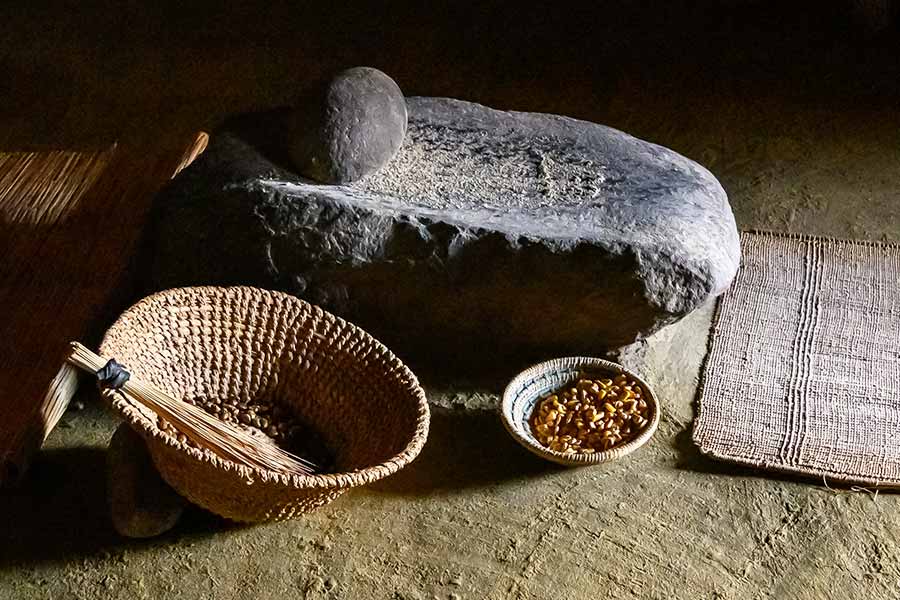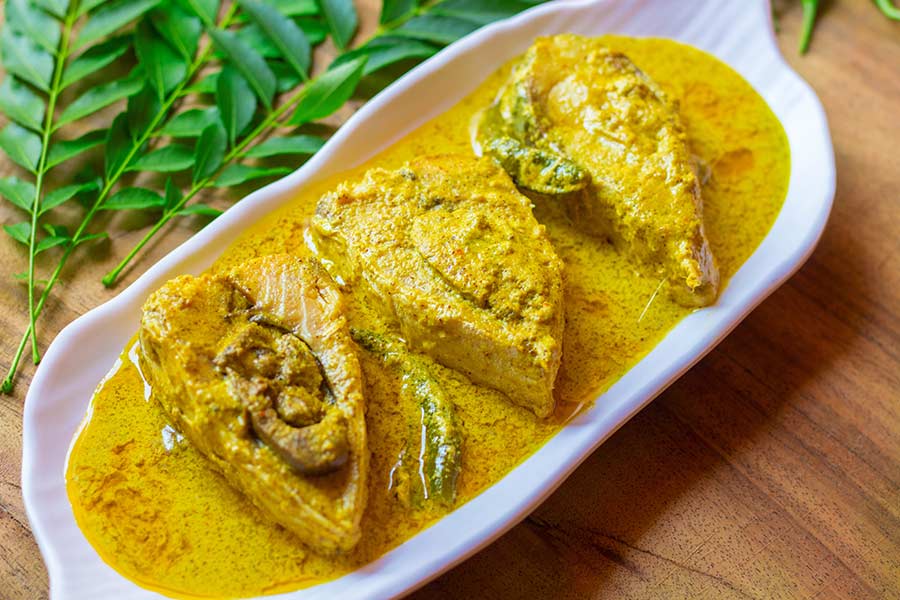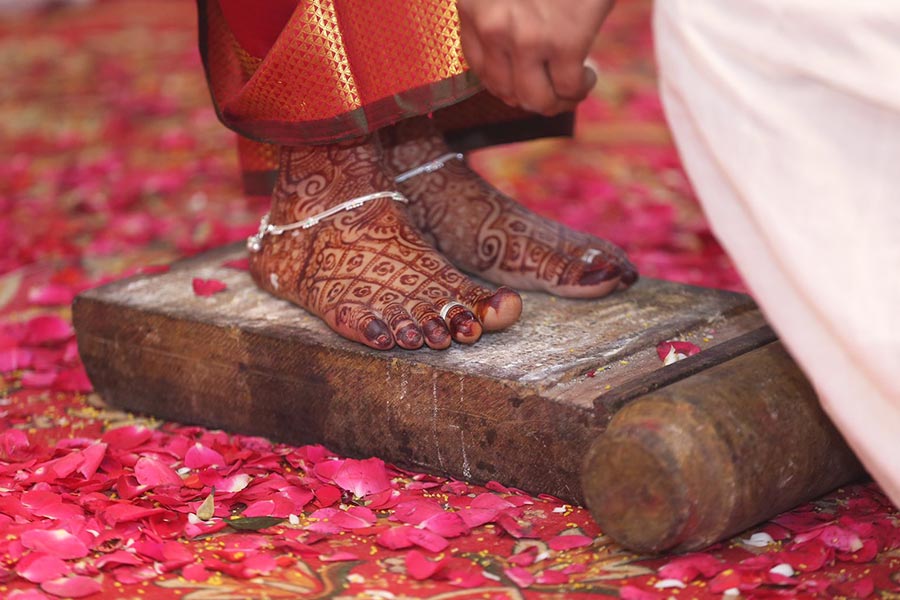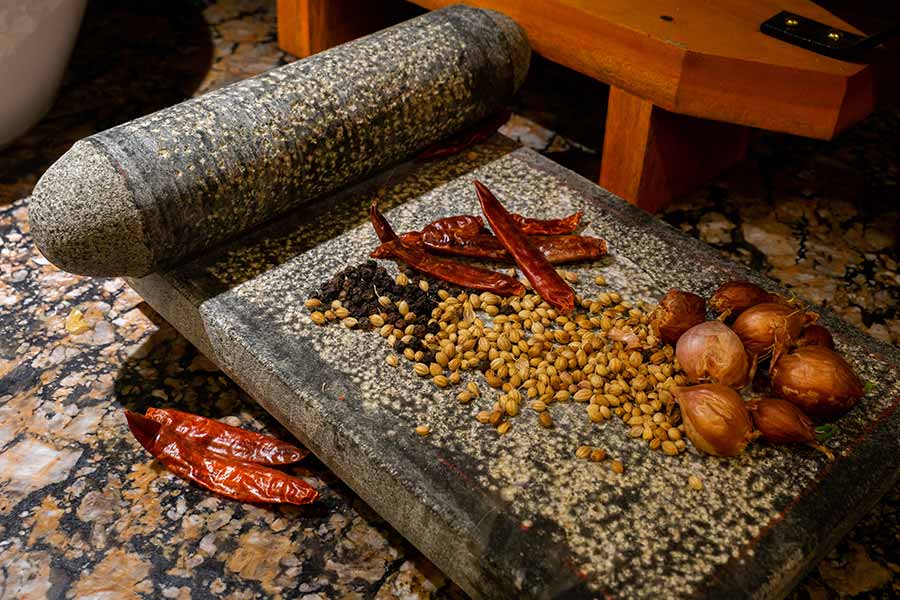A few days ago, while starting to make chicken curry, I was about to put all the whole spices into a mixer grinder, when my eyes fell on the sil batta sitting in a corner and couldn’t resist using it. My dadi would always say, “Masaale hamesha sil batte me hi peesna chaiye, aajkal ki mixie me woh baat nahi.” (Spices should always be ground in a sil batta; today’s modern mixers are just not the same.) In today’s time, however, convenience takes precedence more and more, and the simple act of grinding by hand has been replaced by the whirring of electric motors.
Tracing the origins
A traditional Indian grinding stone, the sil batta, or the sil nora as it is called in Bengal, is usually a fixture of most traditional Indian kitchens. The two-part contraption has a rough unpolished flat stone called the sil and a smaller cylindrical stone called the batta or nora.
The history of a sil batta — sil nora in Bengali, ammi kallu in Tamil — is said to date back to 2500 BC, to the time of the Indus Valley or Indus-Saraswati Civilisation. A piece of it can also be found at the National Museum in New Delhi. With its origins deeply rooted in Indian culinary traditions, it has been an integral part of kitchens for generations. Even today, particularly in rural areas where traditional cooking methods are still prevalent, one finds the use of the sil nora in homes.

In African countries, the ‘sil batta’ like grinding stone is traditionally used to grind legumes and cereals
ShutterstockVarious versions of the grinding stone exist, and the familiar form of the sil nora finds a place not only in Indian culinary history but across the world in cultures from South America, Africa, Spain and more.
Skill and flavour
The sil nora needs preparation before it can be used. After the flat sil is shaped, it is scored with grooves and patterns. The surface of a sil, not being smooth, helps in creating friction for the grinding process. Scoring a sil nora is an art in itself, with traditional nature motifs like flowers, vines, and fish in Bengal, decorating the surface.

A sil being scored by a craftsman
Amit DattaSimilarly there is skill involved in the use of a sil nora as well. The process of using the grinding stone gives the cook control over the process and they are able to grind ingredients to a smooth or coarse paste, just to their liking. Unlike in the mixer, where a small amount of heat is generated due to the mechanism, grinding spices with the batta retains the natural flavour, colour and aroma of the spices.
Any Bengali knows there is precision involved when grinding shorshe or mustard using the sil nora — if not done properly, the bitter notes of the mustard will dominate the sharpness, spoiling your dish. In southern India, the ammi kallu is referred to as the perfect grinding stone to make a coconut chamandi, a freshly ground paste for your curries.

Any Bengali will know that there is precision involved when grinding ‘shorshe’ (mustard) in a ‘sil nora’ for that perfect ‘shorshe ilish’
ShutterstockI remember one particular incident when my mother made fara, a rice flour dish from Uttar Pradesh and Chattisgarh. She used a mixer to make the masala while my dadi always used a sil batta. While both their dishes tasted the same, the texture had a huge difference as the sil batta made the masala smooth like a paste and elevated the dish.
Although the process used to be tiring, the final product was always worth waiting for. It was impressive to see dadi grind ingredients; she used to always refer to this as her way of exercising!
Beyond the kitchen
The use of a Sil Batta isn’t only limited to our kitchens, it acts as an essential part of wedding rituals too.

In a Bengali wedding, the bride and the groom stand on a ‘sil’ during the ‘gaye holud’ ceremony
Dabarshi SarkarIn a Bengali household, the turmeric to be applied on the bride and groom is ground on a sil nora for the gaye holud ceremony. The bride and the groom also stand on the sil during the ceremony. In some Bengali families, there is a ritual where the bride pushes the nora with her feet.
At my home in Kanpur, a ceremony called silponi takes place a day before the wedding, and involves the grinding of rice or dal. The mother of the groom or bride wraps rice in a dupatta and then grinds it on a sil batta.

‘Ammi kallu’ is a part of Tamilian weddings with rituals where the bride stands on the grinding stone
360 fpsIn certain southern Indian weddings, wheat and raw turmeric are ground together in a mortar and pestle as a symbol of hope for the marriage to be prosperous, for the home to be filled with food and auspicious times, and for the girl to remain a married woman.
During Mithun Sankranti, usually celebrated in June, some Indian cultures have a tradition of a Sil Batta Puja where the sil batta is washed with milk and vermillion and turmeric is applied to it.
Despite its dwindling usage, there are those who still cherish the sil batta in the kitchen or at wedding rituals, recognising its unmatched ability. Perhaps in the nostalgia of its simplicity and authenticity, lies a reminder of the importance of preserving our cultural and culinary heritage, one grind at a time.
Ankita Gupta Dujari is a sous chef at Sienna Cafe, but she is more popularly known as tokjhaalmishti. When she’s not in the kitchen, she takes up the responsibility of photographing dishes and shooting videos for Sienna’s social media.






